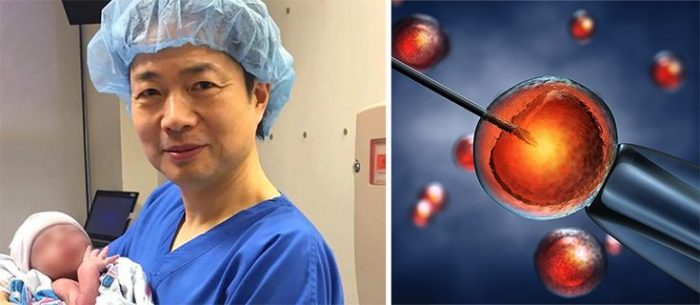The UK’s fertility regulator has given approval for the “cautious use†of techniques to create a baby using the DNA of 3 people. [1]
The Human Fertilisation and Embryology Authority (HFEA) announced its “historic†decision December 15 and said that it would begin accepting applications from fertility clinicsthat wish to become licensed to perform the procedure. The HFEA said 3-parent baby technique, as it is commonly called, will help prevent a small number of children from inheriting potentially fatal diseases from their mothers. [2]
How Does the 3-Parent Baby TechniqueWork?

Three-parent DNA techniques are intended to fix problems linked to mitochondria, structures outside of a cell’s nucleus which produce energy. Mitochondrial problems can cause diseases like muscular dystrophy, major organ failure, and severe muscle weakness.
NPRexplained earlier this year:
“Unlike the DNA that most people are familiar with — the 23 pairs of human chromosomes that program most of our body processes and traits — mitochondrial DNA consists of just 37 genes inside mitochondria, which are structures inside cells that provide their energy.
Mitochondrial disorders range from mild to severe. In many cases there is no treatment, and the affected child dies early in life after suffering progressive, debilitating symptoms.â€
Sally Chesire, the HFEA’s chair, described the decision as a “life-changing†moment for families who might reap the benefits of the technology. In a statement, Chesire said:
“Parents at very high risk of having a child with a life-threatening mitochondrial disease may soon have the chance of a healthy, genetically related child.â€
To prevent children from inheriting mitochondrial defects from their mothers, scientists remove the nucleus DNA from the egg of a prospective mother and insert it into a donor eggfrom which the donor DNA has been removed. This can occur before or after fertilization.
The resulting embryo contains nucleus DNA from its parents, but mitochondrial DNA from a donor.The DNA from the donor amounts to less than 1 percent of the resulting embryo’s genes.
Fertility clinics which have been approvedto use the techniques will perform them on a case-by-case basis.
3-Parent Babies are Already Here
Three-parent babies already exist, they were just created using different methods.
In September, a doctor from a Manhattan fertility clinic announced that the world’s first 3-parent baby had been born to Jordanian parents in Mexico 5 months prior. The doctorwho performed the mitochondrial-replacement technique, called spindle nuclear transfer, had to do so in Mexico because the technique is not approved in the U.S.
Why Worry?
“What happens when you pass down changes to human DNA from generation to generation?†That’s the question critics of the techniques are asking, and the answer is: “Nobody knows.†Nobody has ever done this before. It’s more than a bit terrifying to think that we won’t know the ramifications until a person born using these techniqueshas spent a lifetime on this planet.
In the process of trying to prevent certain types of human suffering, might science be unleashing a brand new type of human suffering?
Considering how much heartache and distress GMO seeds have caused, something would have to be wrong with scientists whodon’thave concerns about genetically engineering human embryos.
Ethically speaking, humanity could be on a slippery slope where the ball pit at the end of the slide consists of “designer babies,†people literally bred to be superior in looks, intellect, artistic ability, and any other positive attribute you can think of.
SaidDavid King, director of the Human Genetics Alert group:
“This decision opens the door to the world of (genetically modified) designer babies. Allowing mitochondrial replacement means that there is no logical basis for resisting GM babies.†[2]
Sources:
[1] NPR
[2] Associated Press

'Britain’s Fertility Regulator has Approved 3-Parent GMO Babies | Natural Society' has no comments
Be the first to comment this post!